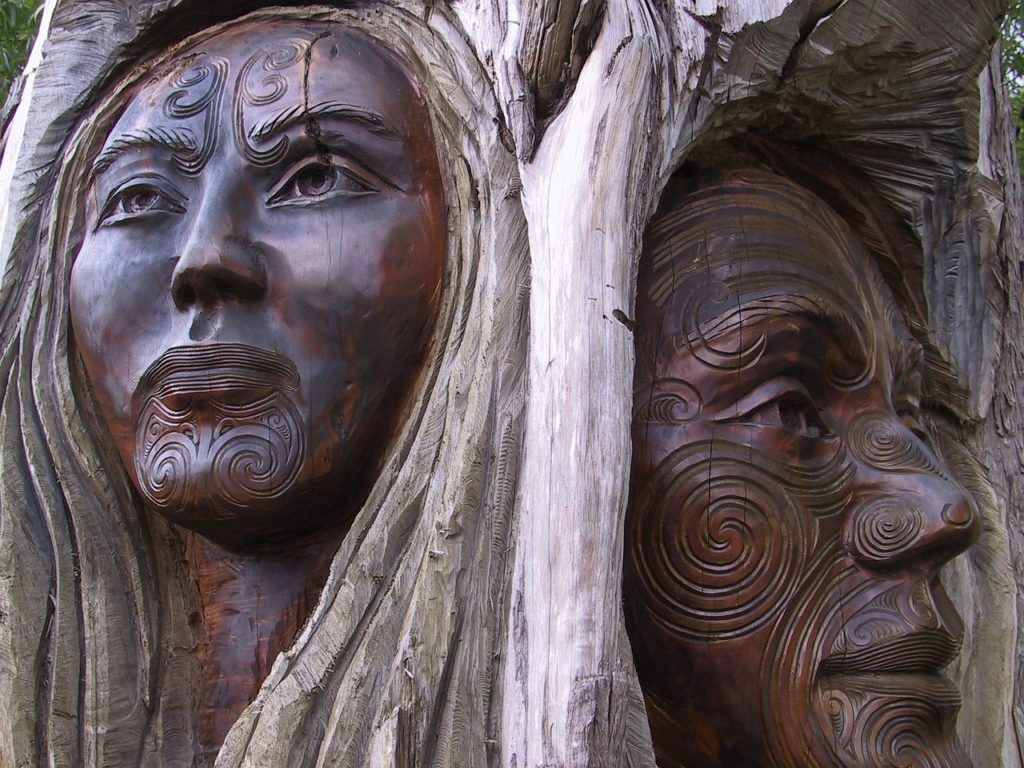The majority of New Zealanders will be fluent in English but this doesn’t mean it’s the only language spoken there, far from it. Te Reo Māori is the language of New Zealand’s native people and is finally being embraced across the whole country.
If you want to know what’s being said and shared on your visit to NZ, here’s our introduction to the language including a guide to common Māori phrases and simple Māori pronunciation.
What Language Do They Speak in New Zealand?
We already established that the most commonly spoken language in New Zealand is English, but the country has more than one official language: it actually has three.
In 1987, the country started to acknowledge the history and culture of its native people when Māori was made an official language. Then in 2006, it took one further step to embrace diversity by adopting Sign Language as an official language as well.
The History of the Māori Language

Originally, Te Reo Māori was the only language spoken in the country by its native people. Early European settlers learnt the language to help them trade with native New Zealanders and in 1840, Queen Victoria made a formal promise to protect the Māori language, as part of the Treaty of Waitangi.
Ashamedly this promise was not honoured. People were discouraged from speaking it, punished even, and schools stopped teaching Māori at all. By 1920 the language appeared to be dying out completely.
Thankfully, through the persistence of the Māori people, their language survived, and is now widely supported across the country. It’s taught in schools once more, often featured in the media, and surveys suggest that over 130,000 people in the country can speak it. These days, many Māori phrases have even slipped into colloquial English speech.
Māori Phrases to Learn
The Māori language is an important part of New Zealand’s history and its cultural identity. If you’re planning a visit to the country’s beautiful shores, it’s essential you stock up on a couple of common Māori phrases to use.
Here are some simple starter phrases for you to begin with:
Māori for Hello and Hi
Kia ora (kee oh-ruh)
This is a friendly, informal way of saying hello: the Māori equivalent of ‘hi’. It literally means ‘be well’ but with the right inflection it can also be used to show agreement.
Māori for Thank You
When it comes to ‘thank you’, there is no direct Māori translation. Perhaps the nearest phrase is ‘Kia Ora’ though this is far more commonly used as a greeting (see above).
Māori for Goodbye
Haere rā (high-reh-rah)
Much like ‘Kia Ora’, this is quite a commonly used phrase – although it’s quite a chatty way to say farewell to someone, it also features on ‘Exit’ signs.
Māori for Good Morning
Mōrena (moh-reh-nuh)
You may also hear the phrase ata marie (ah-tuh mah-ree-eh) as it basically means the same thing, but mōrena is far more commonly used.
Māori for Welcome
Haere Mai (hi-reh my)
As with its English equivalent, this word has more formal overtones, and will often be seen on signs, when entering a geographical location such as a city or building. It literally means ‘come here’.
Māori for My Name Is
Ko…ahau (koh … ah-hoh)
This is perhaps a phrase often taught and less often used but it’s a key step in learning any second language and is reassuring to have a grip on.
Māori for Good
Ka pie (Kah-pie)
A laid-back way of saying good, or well done. It’s such a popular phrase that it’s slipped into New Zealand English as well!
Māori for Food
Kai (K-eye)
Directly, this translates as ‘to eat’ or ‘to feast’ but it’s another phrase that’s frequently used colloquially and: you’ll often hear people saying, ‘let’s get some kai’.
Ready to test out your newly learned Māori phrases? If a New Zealand holiday in 2023 or 2024 is something you’d like to tick off your bucket list, get in touch!
